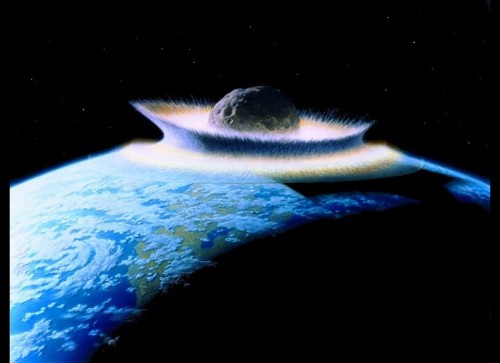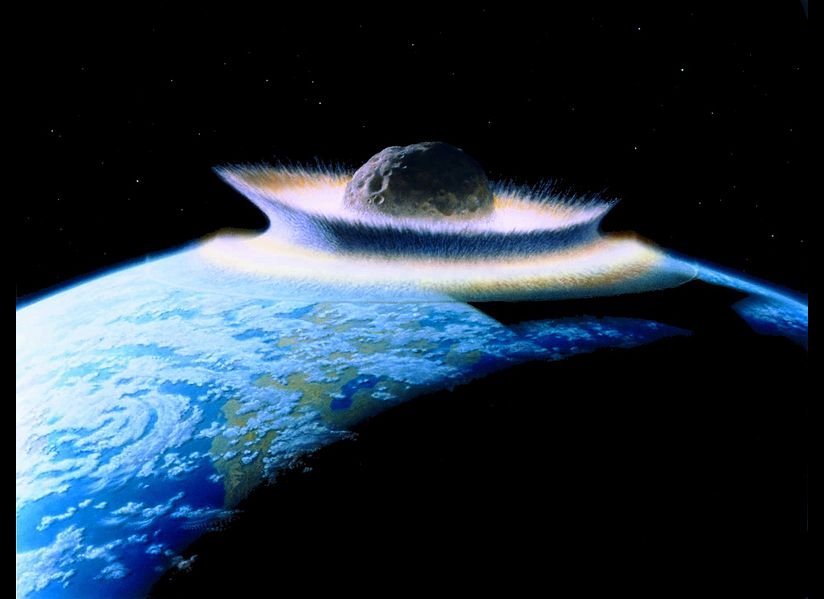 GhostTheory’s newest staff member, Lindsay, has been busy with the social media side of the website. If you haven’t visited or ‘Liked’ us yet, pay her a visit at our Facebook page.
GhostTheory’s newest staff member, Lindsay, has been busy with the social media side of the website. If you haven’t visited or ‘Liked’ us yet, pay her a visit at our Facebook page.
This week Lindsay posted an interesting article by EarthSky that talks about the potential catastrophic dangers that a wild asteroid could bring to earth. In a more ominous tone, NASA’s chief Charles Bolden gave us sound advice on what to do if a large space rocks was hurdling towards Earth: Pray!
We all saw the CCTV and amateur video of the small asteroid that plummeted down on Chelyabinks, Russia, on February 15th of this year. The rock blasted through our atmosphere and with a thundering force, destroyed modern buildings and injured 1,500 or more people. All that from a rock that measured 55 feet in diameter. Imagine one that reaches the size of a football field or bigger.
Given the recent sequester and continuous breakdown of the economy, NASA fears that in the very near future, Earth and all its inhabitants could perish from a cosmic threat. Read this.
Reuters) – NASA chief Charles Bolden has advice on how to handle a large asteroid headed toward New York City: Pray.
That’s about all the United States – or anyone for that matter – could do at this point about unknown asteroids and meteors that may be on a collision course with Earth, Bolden told lawmakers at a U.S. House of Representatives Science Committee hearing on Tuesday.
An asteroid estimated to be have been about 55 feet in diameter exploded on February 15 over Chelyabinsk, Russia, generating shock waves that shattered windows and damaged buildings. More than 1,500 people were injured.
Later that day, a larger, unrelated asteroid discovered last year passed about 17,200 miles from Earth, closer than the network of television and weather satellites that ring the planet.
The events “serve as evidence that we live in an active solar system with potentially hazardous objects passing through our neighborhood with surprising frequency,” said Representative Eddie Bernice Johnson, a Texas Democrat.
“We were fortunate that the events of last month were simply an interesting coincidence rather than a catastrophe,” said Committee Chairman Lamar Smith, a Texas Republican, who called the hearing to learn what is being done and how much money is needed to better protect the planet.
NASA has found and is tracking about 95 percent of the largest objects flying near Earth, those that are .62 miles or larger in diameter.
“An asteroid of that size, a kilometer or bigger, could plausibly end civilization,” White House science advisor John Holdren told legislators at the same hearing.
But only about 10 percent of an estimated 10,000 potential “city-killer” asteroids, those with a diameter of about 165 feet have been found, Holdren added.
On average, objects of that size are estimated to hit Earth about once every 1,000 years.
“From the information we have, we don’t know of an asteroid that will threaten the population of the United States,” Bolden said. “But if it’s coming in three weeks, pray.”
In addition to stepping up its monitoring efforts and building international partnerships, NASA is looking at developing technologies to divert an object that may be on a collision course with Earth.
“The odds of a near-Earth object strike causing massive casualties and destruction of infrastructure are very small, but the potential consequences of such an event are so large it makes sense to takes the risk seriously,” Holdren said.
About 66 million years ago, an object 6 miles in diameter is believed to have smashed into what is now the Yucatan Peninsula in Mexico, leading to the demise of the dinosaurs, as well as most plant and animal life on Earth.
The asteroid that exploded over Russia last month was the largest object to hit Earth’s atmosphere since the 1908 Tunguska event when an asteroid or comet exploded over Siberia, leveling 80 million trees over more than 830 square miles (2,150 sq km).
14 comments





